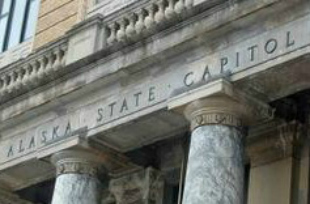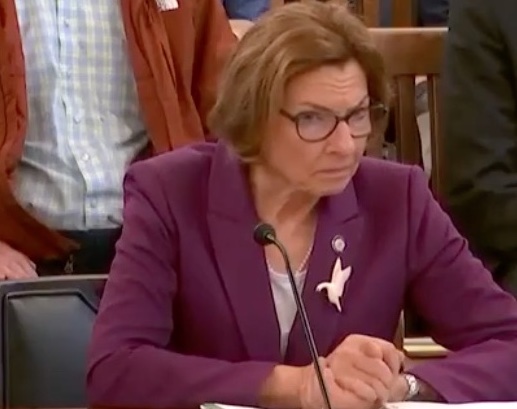By FRANK MIELE | REAL CLEAR WIRE
Thursday, April 24, was a day like any other day – the sun came up, the sun went down, and Donald Trump was hit with at least three nationwide injunctions by federal district court judges.
That’s just the way it goes if you are a president who wants to take back America from the entrenched left-wing bureaucracy and restore common sense to government before it is too late.
The danger of the bureaucracy was predicted by Julien Benda in his 1927 book “The Treason of the Clerks,” which warned of the danger of the intellectual class adopting political passions that had previously been the sole domain of the masses. We see this most distinctly today in the federal bureaucracy, which I dare say has the greatest concentration of degree-holders from Harvard, Yale, Princeton, Columbia (and the like) of any sector in the nation, other than the incestuous universities themselves.
The treason that Benda described was the loss of independence of thought and dispassionate reason by intellectuals, and the accompanying subservience of intellect to political passions. During Trump’s first term, I wrote a column describing the danger that Benda had foreseen:
“Benda wrote at the beginning of the age of mass communication, and yet he already saw that political passions have attained a universality never before known. … Thanks to the progress of communication and, still more, to the group spirit, it is clear that the holders of the same political hatred now form a compact impassioned mass, every individual of which feels himself in touch with the infinite number of others, whereas a century ago such people were comparatively out of touch with each other and hated in a scattered way.”
It seems that we are now living out Benda’s worst nightmare — an age of manipulation of the masses by those who think they know better — whether you call them the “deep state,” the “opposition party,” “the national elite,” “the entrenched bureaucracy,” or just “the establishment.”
And for the past 10 years, they have turned their hatred on Donald Trump. Without rhyme or reason, they fight him on every reform and arm themselves with invented scandal and fake news.
Now, in Trump’s second term, we see that the bureaucracy has a close ally in the judiciary – not one judge, but multitudes that aim to preserve the status quo of liberal governance. If that wasn’t clear before April 24, there was no room for doubt after the day was filled with one court ruling after another telling Trump to “stand back and stand by” rather than to exercise his lawful power as president.
Here’s what tumbled out of the judicial branch that day:
– A federal district court judge in California blocked Trump’s executive order that would have denied federal funds to so-called sanctuary cities that limit or forbid cooperation with federal immigration authorities.
– A Washington, D.C., judge blocked the Trump administration from following through on the president’s executive order requiring that voters in federal elections show proof of citizenship when registering.
– A district judge in New Hampshire blocked efforts to defund public schools that utilize diversity, equity, and inclusion (DEI) initiatives. Not to be outdone, judges in Maryland and Washington, D.C., essentially issued the same order, giving added protection to one of the least popular programs ever shoved down the throat of American citizens.
At the time, those were the latest of more than a dozen nationwide injunctions issued by unelected federal judges who appeared more interested in preserving and protecting left-wing shibboleths than the Constitution.
Also in courts across the nation that week were attempts by judges to reject Trump’s authority as commander in chief to ban transgender participation in the military, to deny Trump the right to strip security clearances from law firms that he says put national security interests second to political partisanship, and stop the administration’s efforts to eliminate federal news services such as Voice of America that engage in anti-American propaganda.
Those are all in addition to the several injunctions issued relative to Trump’s promised reform of the immigration system to expedite deportation of illegal immigrants, especially those who have a criminal history or are members of international gangs.
If that seems normal, it isn’t. There were only six nationwide injunctions during the eight years of the George W. Bush presidency, and only 12 during the Obama presidency. That increased to 14 under President Biden, which was surpassed by President Trump in the first nine weeks of his second term when 15 such injunctions were issued. Of course, Trump should be accustomed to such judicial abuse. In his first term, there were 64 injunctions against his policies, a staggering 92.2% issued by Democrat-appointed judges. Julien Benda would have clearly recognized the “political passions” that had supplanted the disinterested intellectual rigor we once expected of our judges.
Yet because of our habituated respect for the separation of powers, none dare call it the treason of the judiciary.
That of course is a reference to the 1960s tract “None Dare Call It Treason” by John A. Stormer. Stormer took on the country’s intellectual elites, blaming them for working against the interests of the nation by tolerating or quietly promoting communism. The left-wing elites of the day laughed it off as another right-wing conspiracy theory, but as time has passed it’s become clear that there was indeed a long-range effort to corrupt our institutions with Communism 101 – reducing social acceptance of religion, turning education into indoctrination, and infiltrating government with the intelligentsia that thinks American values are outdated.
Now, at long last, we can see the fruit of the corrupt tree sprouting in our court system, where judges help illegal immigrants escape through the back door of the courtroom, where other judges demand the return of deported gang members or halt the deportation of antisemitic radicals, and where every effort to put America first is ruled unconstitutional.
Fighting back against the overreach of the judiciary must be Donald Trump’s No. 1 priority as he seeks to restore sanity to the federal government. Because the most important principle of constitutional law that is being decided in the next few months is whether the president is truly the chief executive or whether he serves at the pleasure of left-wing judges who put political passion ahead of national interests.
In the ultimate irony, the case must be decided by nine men and women in black robes, the justices of the Supreme Court of the United States. The fate of the nation’s future hinges on whether they will seek justice impartially or be swayed by partisan rancor.
Unfortunately, it’s an open question.
This article was originally published by RealClearPolitics and made available via RealClearWire.








